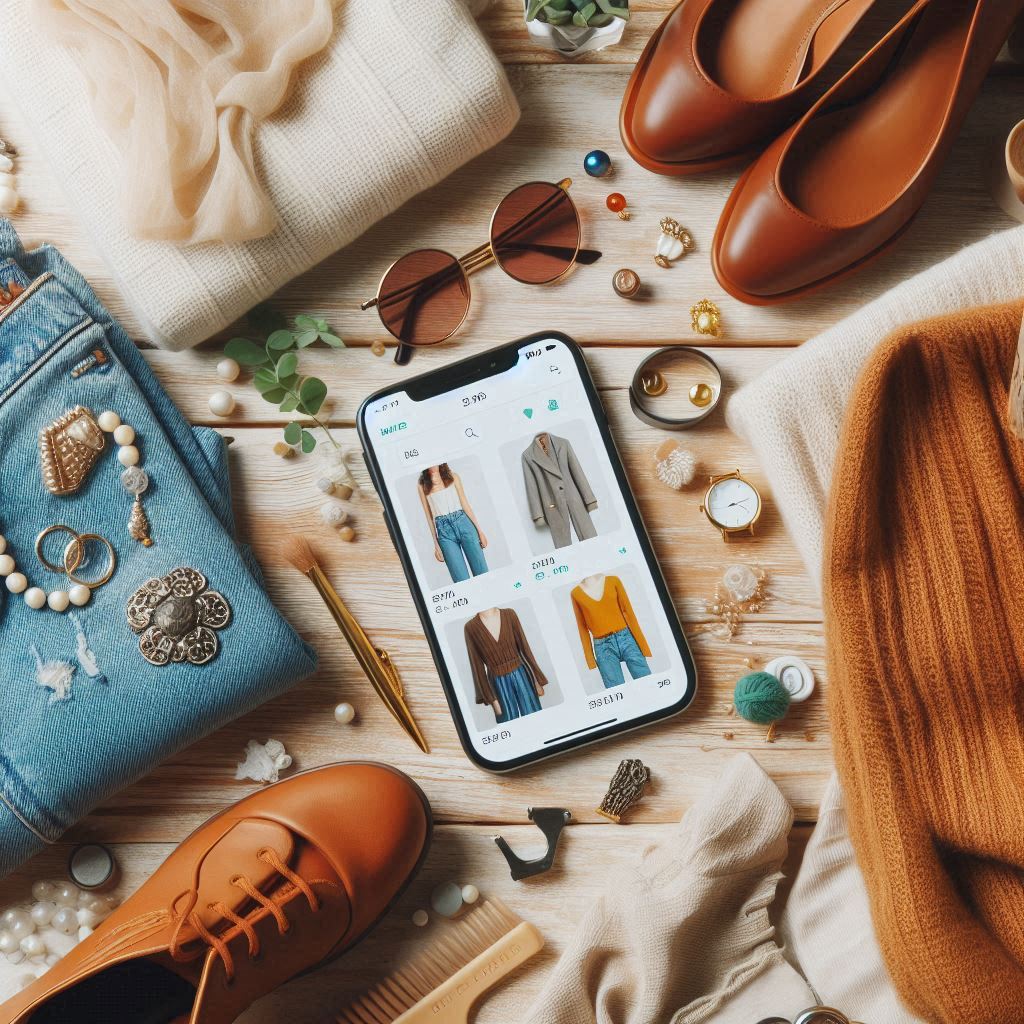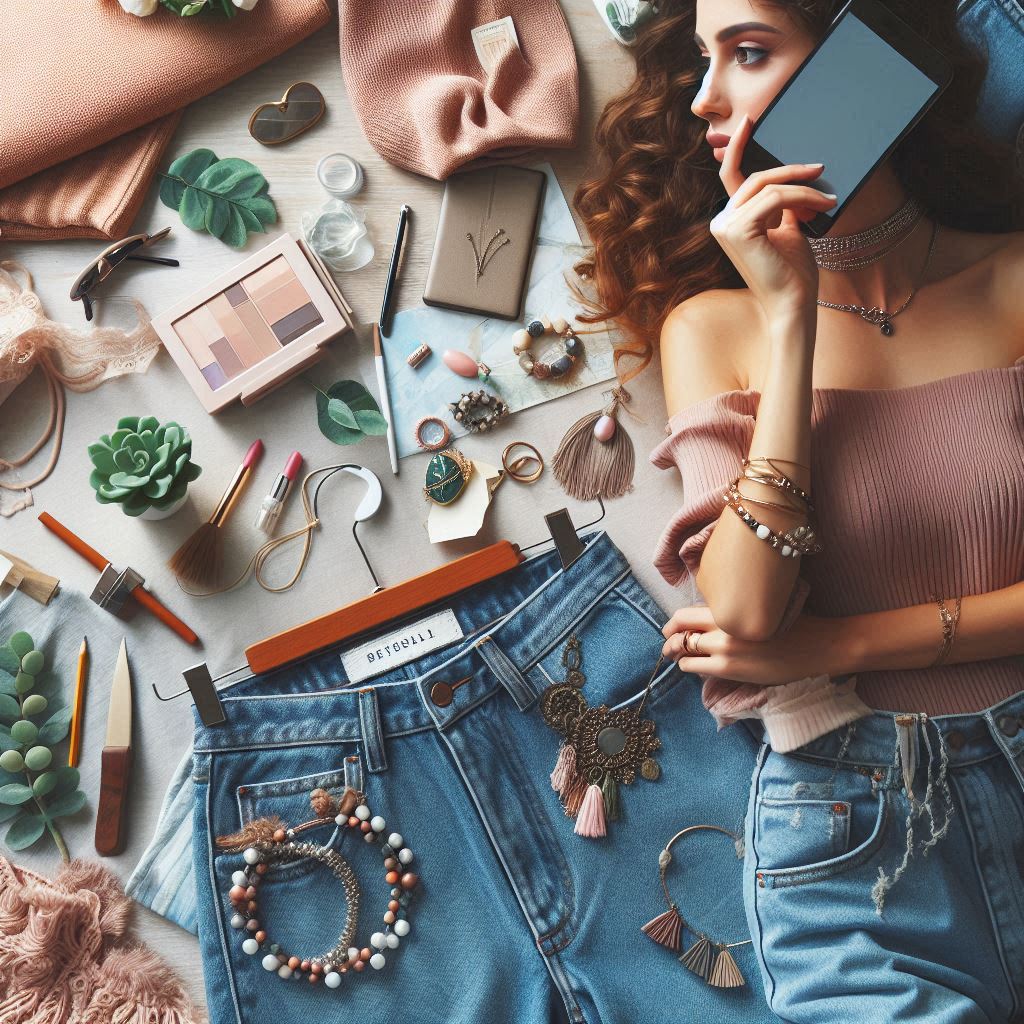Table of Contents
Second hand designer clothes are like treasures with a story. There’s something incredibly alluring about owning a piece with a past, a wardrobe staple that’s been loved before and is now ready to find a new home. Exploring this world opens up more than just closet space, it reveals a shift in the way we think about fashion.
Over the years, the demand for second-hand designer fashion has surged. It’s not just about paying less for high-end labels, though that’s a pretty sweet part of it. It’s also about embracing unique styles that you just can’t find in current collections. Vintage designs often carry a certain charm and quality that modern productions don’t always match. It’s like rediscovering the hidden gems of fashion history.
This trend is more than a passing phase. It’s a response to growing awareness around sustainability and environmental impact. The fashion industry is heavily scrutinised today for its ecological footprint, and buying preloved items allows us to minimise waste and extend the lifecycle of products we love. Each purchase is a small step towards reducing the demand for fast fashion.
Accessorising with second-hand designer clothes allows you to tell a story, one that’s sustainable and stylish. Think of it as curating your own collection of narratives, each piece a chapter that adds depth to your style. It’s a way to stand out while doing good, and that feels pretty rewarding.
This introduction just scratches the surface. As we go further, I’ll guide you through the ins and outs of finding those perfect designer pieces and making them part of your everyday wear. After all, fashion should be fun, expressive, and personal, with a little extra layer of consciousness to keep it meaningful.
Maximising the benefits of buying second hand designer fashion

Buying second-hand designer clothes is like finding hidden treasures while doing your part to make the world a bit greener. You don’t just get access to one-of-a-kind styles, but you also enjoy several other perks.
One of the standout benefits is the potential savings. Let’s face it, designer items at retail price can cost a pretty penny. Shopping second-hand lets you snag these luxury labels at a fraction of the original cost. This allows more room for flexibility in your budget, letting you indulge in more versatile and exciting pieces than you might otherwise afford.
And it’s not just about saving money. Second-hand shopping opens the door to unique and sometimes rare finds. From limited edition pieces to vintage classics, these are items that might not be available in stores anymore. It’s like having a wardrobe that not only speaks to your personal style but tells a richer story than off-the-rack selections. Knowing your closet contains these unique items can elevate your style and give you that one-in-a-million look.
Beyond personal style and savings, there’s a feel-good factor involved in second-hand shopping. By choosing preloved garments, you’re giving clothes a second chance and keeping them out of landfills. It’s a move against the fast fashion trend, supporting a cycle of reuse and recycling that’s beneficial for the planet.
The preloved market also encourages a more thoughtful approach to shopping. You’re not just buying because it’s trendy or new, but because it’s something you adore and will cherish. It’s about creating a wardrobe filled with stories and memories, items that have character and charm.
With all these benefits, it’s easy to see why second-hand designer fashion is not just a passing trend, but a powerful movement toward more sustainable and responsible consumer choices. Embracing it can redefine what luxury means to you.
Where to find second hand designer clothes online?
Navigating the world of online shopping for second-hand designer clothes doesn’t have to be daunting. With a bit of know-how, you can explore an array of platforms tailored to meet different style preferences and budget constraints.
Popular platforms like eBay and Poshmark have large communities dedicated to selling preloved designer items. They’ve built reputations as go-tos for second-hand shopping due to their vast selection and reach. Dive into these marketplaces to discover endless options from individual sellers.
Then there are specialised websites like The RealReal and Vestiaire Collective which offer curated collections from trusted sellers. These platforms focus exclusively on luxury fashion, ensuring authenticity and quality with rigorous checks and verifications. It’s a bit like stepping into a high-end boutique—online.
Another place to consider is luxury consignment shops with an online presence. Sites like Rebag for designer handbags or Grailed for menswear cater to niche markets, where you can find specific high-demand items. These platforms often feature authenticated products, providing peace of mind in your shopping experience.
When choosing where to shop, take into account return policies, shipping costs, and seller track records. Some platforms offer buyer protection programs which can be particularly reassuring when purchasing higher-priced items.
Remember to keep your style goals in mind and align them with the unique offerings of each site. This way, you can optimise your browsing time and focus on finding pieces that truly speak to you.
Mastering the art of spotting authentic designer items
Spotting authentic designer items online requires a keen eye and a bit of due diligence. One crucial aspect is understanding condition ratings and descriptions. Sellers often use terms like ‘mint condition’, ‘gently used’, or ‘fair condition’. Knowing what each means helps set the right expectations and avoids surprises.
Size and fit play an essential role in the success of your purchase. Designer sizing can vary significantly. Checking the measurements provided by the seller against your own can save you from fitting headaches. It’s also wise to know the brand’s typical fit to determine if it’s true to size or runs larger or smaller.
Price negotiation is another skill worth honing. Many platforms allow you to offer a price lower than the listed one. Being respectful and realistic with offers can increase your chances of closing a favorable deal. Remember, researching what similar items have sold for can be a good benchmark.
Safety in online transactions is paramount. Always ensure you’re using recognized and secure payment methods. Scammers exist, and being cautious can protect your personal and financial details. Establishing good habits with transactions is always a plus.
Customer reviews and seller ratings offer insights into the seller’s reliability and the item’s condition. Reading through these can provide an additional layer of verification. A seller with a solid track record is likely to offer genuine, quality items.
Equipped with these strategies, you can transform the way you shop for second-hand designer items, ensuring you snag authentic pieces that fit your style and budget.
Seasonal trends in second hand designer fashion
Following seasonal trends while shopping for second-hand designer fashion offers an exciting way to refresh your wardrobe. Each season brings its own vibe and style, and second-hand markets are full of treasures waiting to fit right into your seasonal wardrobe needs.
In spring, look for floral prints and light fabrics that capture the essence of new beginnings. Summer wardrobes can be complemented with breezy, brightly colored designer pieces that scream vacation-ready style. In fall, lean into rich colors like burgundy and forest green, with items that offer layers and texture, suitable for cooler days. Winter is all about cozy yet chic pieces like designer coats, knitwear, and luxurious scarves that can turn any outfit into a statement.
Another advantage of second-hand shopping is the ability to find these items at a fraction of the cost. Plus, while retailers stock their shelves with the latest seasonal must-haves, there’s an opportunity to find last season’s pieces which often hold timeless appeal at significantly reduced prices.
It’s also worth considering shopping off-season. While there might be a smaller selection, the deals can be incredible as sellers often look to clear out inventory, making it a savvy move for those who plan ahead.
Seasonal trends give you the chance to experiment with styles and perhaps pick up a piece that’s just a little outside your comfort zone. By mixing trendy finds with classic staples, you can stay in vogue throughout the year without breaking the bank.
The environmental impact of buying second-hand
Choosing second-hand designer clothes has clear benefits beyond just finding unique styles and saving money—it’s a positive step for the environment. Each purchase helps reduce the fashion industry’s enormous carbon footprint and tackle the problem of fashion waste.
The fashion industry is known for its substantial environmental toll, from water consumption to greenhouse gas emissions. By buying second-hand, you actively participate in reducing the demand for new production. This means fewer resources are used, and there’s less pollution—every preloved garment is a small but meaningful push towards more sustainable practices.
One of the biggest environmental challenges in fashion is textile waste. Tons of clothing end up in landfills each year, often taking decades to decompose. Opting for second-hand allows you to extend the life of quality garments, keeping them out of the landfill for longer. It’s not just a fashion choice, but a conscientious decision to lessen your environmental impact.
Additionally, second-hand shopping challenges the fast fashion cycle. By supporting the resale market, you promote a circular fashion model where clothes are reused and recycled rather than discarded. It’s a shift from linear consumption to a more mindful, circular approach.
Embracing second-hand fashion contributes to a more sustainable world. Each purchase you make is a vote for change, reinforcing demand for responsible production and consumption. Besides enhancing your wardrobe, you’re playing a part in preserving the planet for future generations.
Success stories: exciting finds in second hand designer shopping
Hearing about amazing finds in second-hand shopping can be both inspiring and motivating. Many shoppers have uncovered incredible treasures that have become cherished parts of their wardrobes.
One success story involves discovering a rare vintage Chanel purse at a fraction of its retail price. This timeless piece not only elevated the individual’s style but also offered a sense of connection to fashion history. It’s a reminder of how patience and persistence in the second-hand world can pay off.
Others have shared stories of stumbling upon limited edition designer collaborations that were once unattainable. Finding such pieces preloved allows shoppers to acquire items that are no longer in production, adding to their collection’s uniqueness.
There are tales of people finding luxury outerwear just in time for the season change, like a perfect Burberry trench or a cashmere coat from Max Mara. These finds often provide a boost of confidence and satisfaction, knowing that they acquired quality pieces sustainably.
Sharing these stories isn’t just about showcasing great deals and rare finds. They highlight the joy and variety that comes with second-hand shopping. Whether it’s an iconic dress from a famed runway show or a pair of shoes admired in a fashion magazine years ago, preloved designer fashion holds many rewards.
These stories encourage more people to explore second-hand markets with an open mind, knowing that incredible pieces are out there waiting to be discovered by attentive and adventurous shoppers.
FAQs
How can I ensure the item is genuine?
Check for authenticity guarantees from the platform and seller reviews. Look for identifying features specific to the brand, like tags and stitching details.
What should I do if an item doesn’t fit?
Always review the platform’s return policy before purchasing. Some sellers might offer flexible return options, but it’s good to confirm.
How do I decide if a price is fair?
Compare prices of similar items across different platforms to gauge a reasonable price. Condition and rarity also influence value.
Is it safe to buy from individual sellers?
Look at the seller’s rating and read buyer reviews. Platforms with buyer protection policies also add a layer of trust and security.
How do I maintain second-hand designer clothes?
Proper care is key. Follow the care label instructions, and consider professional cleaning for delicate items to keep them in good condition.
Conclusion: embracing sustainable fashion choices
Embracing second-hand designer fashion is more than just a shopping preference; it’s a commitment to sustainable living. Each purchase tells a story of style, savings, and sustainability, culminating in a wardrobe that reflects individuality and responsibility.
Every second-hand piece added to your collection reduces environmental impact, one garment at a time. You’re part of a movement that challenges the throwaway culture of fast fashion, supporting a fashion industry that values originality and sustainability.
The allure of unique finds, impressive savings, and the positive environmental impact makes second-hand shopping a rewarding journey. It allows you to enjoy luxury fashion without the hefty price tag.“
Choosing preloved designer clothes is a way to express personal style thoughtfully and sustainably. It’s about creating a wardrobe with character, filled with pieces that matter.
This journey into second-hand fashion not only transforms personal style but also contributes to a more sustainable future. As you explore and discover, you’ll realise it’s not just about fashion—it’s about fostering change and making every choice count.
Have you got second hand clothes to sell? Please read our guide here to help you sell your unwanted clothes online from the comfort of your home.
Kay,
secondlifeloot.com

